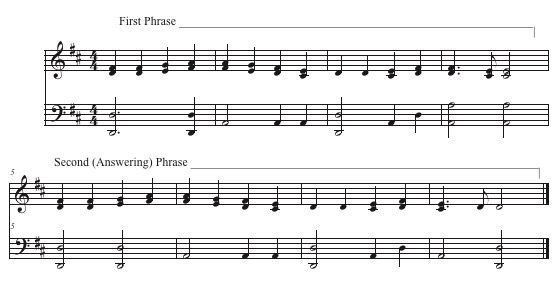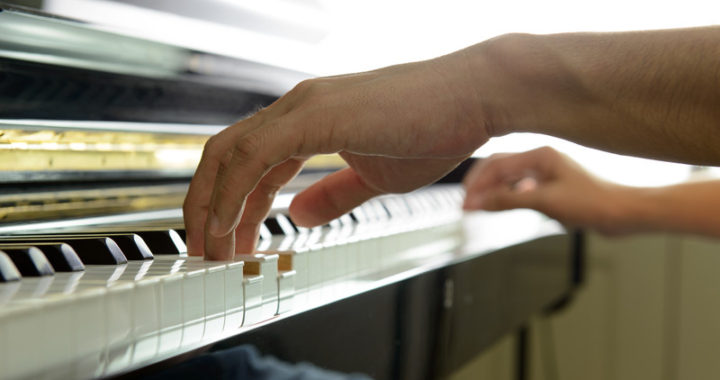 Get the eBook bundle that thousands of songwriters are using to polish their songwriting technique. Comes with a free copy of “Creative Chord Progressions”
Get the eBook bundle that thousands of songwriters are using to polish their songwriting technique. Comes with a free copy of “Creative Chord Progressions”
There is a kind of melodic structure called period structure — a two-phrase melody in which the first phrase acts as a kind of “question”, and the second phrase provides an “answer”.
A simple example of this is the very familiar “Ode to Joy” theme, composed by Beethoven. You can hear that the first phrase ends in an incomplete way, needing more to make it sound finished.
Listen:

This was a common structure in classical music, but you’ll find that good pop songwriters have used this so-called period structure in their songs as well. Think of the first phrase of “All My Loving” (Lennon & McCartney):
“Close your eyes and I’ll kiss you/ Tomorrow I’ll miss you/ Remember I’ll always be true/”
The second phrase gives us the exact same melody, but while the first phrase sounds incomplete due to what we call an “open cadence” — a phrase that ends on anything except a I-chord — the second phrase ends on something that sounds more complete: a I-chord:
“And then while I’m away/ I’ll write home every day/ And I’ll send all my loving to you.”
The fact that both musical phrases sound almost the same except for the very end is an important feature of period structure. The satisfying bit about period structure is actually the chord progression, because it comes to us in two parts: a first part that travels out away from the tonic chord, and then a second part that returns home:
All My Loving:
First phrase |Second phrase ii V I vi |IV ii bVII V| ii V I vi |IV V I| F#m B E C#m |A F#m D B| F#m B E C#m |A B E|
If you’re interested in trying your hand at creating a musical period as a structure for your song melodies, there are lots of ways to do it. But as usual, it’s often best to start easy. Here’s a chords-first method that you might find will give you good results:
- Create a short chord progression (anything from two to six chords in length) that ends on a V chord. Example: I IV ii V (C F Dm G)
- Repeat that chord progression, changing the ending so that it ends on a I chord. Example: I IV V I (C F G C)
- Improvise a melody that works with the first progression, allowing the last note to be longer than the others that you’ve used.
- Repeat that melody for your second progression, being mindful of changing the notes toward the end to fit the final chords of the second phrase.
If you’re looking for a more complete look at the musical period, Wikipedia’s article on the topic is a good one to read, though its examples are all from Classical music.
You’ll find that genres that benefit the most from simple, clearly designed melodies (folk, pop and country) are the ones that will make best use of period structure. One added benefit is that creating one short melodic phrase essentially gives you two, as the second phrase is basically a repeat of the first one
 Written by Gary Ewer. Follow Gary on Twitter
Written by Gary Ewer. Follow Gary on Twitter
 Starting songs by working out the chords can work well, but you’ve got to avoid some common pitfalls. Read “Writing a Song From a Chord Progression” to discover the best chords-first methods.
Starting songs by working out the chords can work well, but you’ve got to avoid some common pitfalls. Read “Writing a Song From a Chord Progression” to discover the best chords-first methods.











Pingback: GARY EWER – A Simple, Time-Honoured Way For Writing Song Melodies | I Write The Music